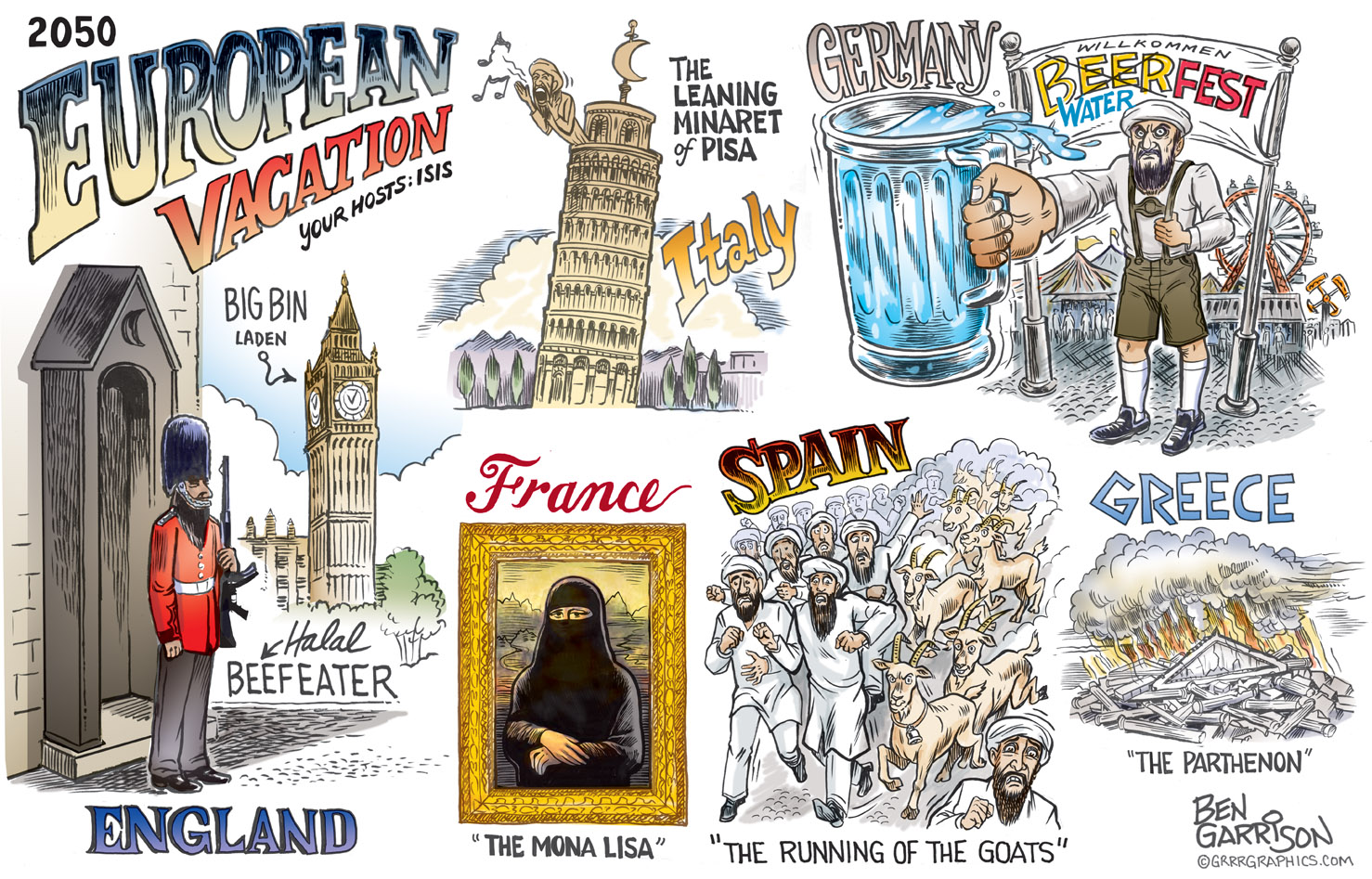Western Europe’s Immigrant Crisis: Did Soviets Win After All?
 We can almost still hear President Ronald Reagan yell “Mr. Gorbachev, Tear Down This Wall” in 1987. It is obvious to us that both men were proponents of the freedom and openness of glasnost—as well as the economic restructuring of perestroika. The Wall fell on November 9, 1989, and the Soviet Union was apparently disbanded.
We can almost still hear President Ronald Reagan yell “Mr. Gorbachev, Tear Down This Wall” in 1987. It is obvious to us that both men were proponents of the freedom and openness of glasnost—as well as the economic restructuring of perestroika. The Wall fell on November 9, 1989, and the Soviet Union was apparently disbanded.
Gorbachev comes across as the guy who threw it all away, but weren’t those in the West the ones who really lost out? At the end of World War II, victorious Western Europe was just a shadow of what it once was. Britain had lost its Empire and was financially in ruins. Anti-Communist Germany and Italy had been militarily defeated. France, Holland, and Belgium had been bombed into near oblivion before being liberated.
The new-and-improved Europe was anything but, after the war. The Soviets had a better strategy for winning their hearts and minds, no longer using tanks and heavy hands to triumph. “Let them install weak democracies and we’ll turn them into socialist states,” they could have said, but held back. “We’ll saddle them with ‘war crimes’ guilt to stifle dissent.”
The Soviets must have been delighted. By 1991, Western Europe was primed to inflict its own self-defeating social policies. No defense was allowed against multiculturalism. With the Iron Curtain down, Angela Merkel (from former Soviet East Germany) took over a unified Germany and greater Eurozone.
 Unable to defend themselves against charges of “colonialism” and anti-Semitism, Europe had no way to turn turn back the tide of multiculturalism and diversity. Merkel opened the floodgates to Islamic “economic” migration for all Europe.
Unable to defend themselves against charges of “colonialism” and anti-Semitism, Europe had no way to turn turn back the tide of multiculturalism and diversity. Merkel opened the floodgates to Islamic “economic” migration for all Europe.
The invasion by millions into the European heartland means that the Western or NATO threat to the old Warsaw Pact is considerably weakened. Interestingly, Russia and the rest of the old Soviet Union, including Eastern Europe, have rejected migrants. Look for traditional patterns of tourism to change. Check back in 2050.
 We can almost still hear President Ronald Reagan yell “Mr. Gorbachev, Tear Down This Wall” in 1987. It is obvious to us that both men were proponents of the freedom and openness of glasnost—as well as the economic restructuring of perestroika. The Wall fell on November 9, 1989, and the Soviet Union was apparently disbanded.
We can almost still hear President Ronald Reagan yell “Mr. Gorbachev, Tear Down This Wall” in 1987. It is obvious to us that both men were proponents of the freedom and openness of glasnost—as well as the economic restructuring of perestroika. The Wall fell on November 9, 1989, and the Soviet Union was apparently disbanded. Unable to defend themselves against charges of “colonialism” and anti-Semitism, Europe had no way to turn turn back the tide of multiculturalism and diversity. Merkel opened the floodgates to Islamic “economic” migration for all Europe.
Unable to defend themselves against charges of “colonialism” and anti-Semitism, Europe had no way to turn turn back the tide of multiculturalism and diversity. Merkel opened the floodgates to Islamic “economic” migration for all Europe.